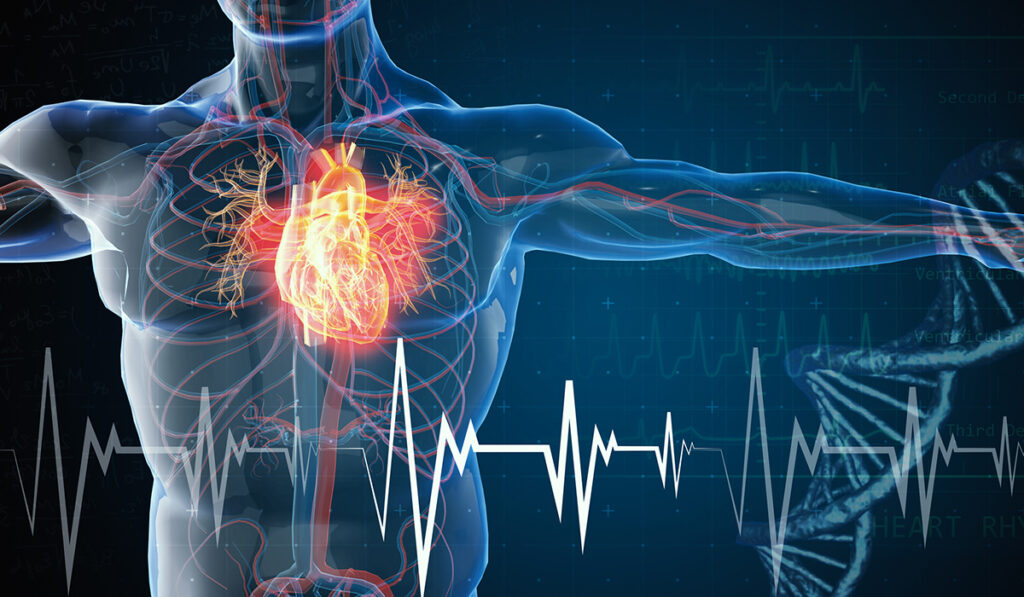In a recent Vanderbilt University Medical Center study, researchers delineated oligomers as a key mechanism by which the electrical structure of the atria can become compromised and susceptible to atrial fibrillation.
The damage stems from natriuretic peptide oligomers, which have cytotoxic and electrophysiological effects of on atrial cells, said Katherine T. Murray, M.D., a professor of clinical pharmacology and cardiology at Vanderbilt and principal investigator on the study.
“We knew that oligomers were a culprit in other disease processes such as Alzheimer’s and wanted to see if they were complicit in atrial fibrillation.”
“We knew that oligomers were a culprit in other disease processes such as Alzheimer’s and wanted to see if they were complicit in atrial fibrillation,” Murray said.
“When we exposed atrial cells to oligomers, we found increased superoxide generation and reduced mitochondrial biogenesis, setting the stage for dysfunctional electrical conduction. This was similar to observations in a hypertensive model. Exposure to monomers, on the other hand, had no effect.”
This highlights the role played by these protein clusters in the genesis of multiple diseases and raises the incentive to develop a treatment that targets them.
“Mitochondrial function is vital to maintaining every cell in our body,” Murray said. “Interrupting the chain through which oligomers suppress normal cell activities is a goal a number of us in different specialties at Vanderbilt are pursuing.”
Oligomers, Not Amyloid, as Target
“The generation of oligomeric, amyloid-forming proteins is accelerated when reactive lipid mediators of oxidative stress are present,” Murray explained.
Proper folding is critical to protein function, but under oxidative stress, oligomers tend to misfold and aggregate, ultimately forming amyloid, the end-stage material that disrupts function of the heart and brain.
“Interrupting oligomers would be a major strike at the core of the problem.”
In older hearts, the atrium invariably develops amyloid, composed of ANP (atrial natriuretic peptide) and BNP (B-type natriuretic peptide).
“If you look at an autopsy of someone in their late 80s or 90s, almost every one of them will have amyloid,” Murray said. “What is interesting in our hypertension study is that actual amyloid deposition did not correlate with atrial fibrillation, but the oligomers did, suggesting that interrupting oligomers would be a major strike at the core of the problem.”
Oligomers on Trial
Through human atrial cell and murine models, the researchers tested the hypothesis that pre-amyloid oligomers derived from natriuretic peptides cause cytotoxic and electrophysiological effects in atrial cells, inducing arrhythmia susceptibility.
They found that oligomers altered ionic currents in cardiomyocytes to account for reduced action potential duration, phase 0 maximal conduction velocity, and an elevated resting membrane potential.
“Our hypertensive mice developed atrial fibrillation and natriuretic peptide oligomers within two weeks of blood pressure elevation,” Murray said. “These findings demonstrate that these oligomers are novel mediators of atrial arrhythmia susceptibility.”
Further, the researchers discovered that for an inherited mutant form of ANP, oligomer formation was markedly accelerated.
“Accelerated oligomerization by mutant ANP likely plays a role in the development of atrial fibrillation in this inherited, early onset disease,” Murray said.
Interrupting the Chain
Efforts have been ongoing to identify, target and inactivate the reactive lipid mediators of oxidative stress that are complicit in diseases including hypertension, lupus, rheumatoid arthritis, atherosclerosis and amyloid disorders.
In the early 2000s, Vanderbilt researchers found isolevuglandins – highly reactive byproducts of reactive oxygen species that induce oligomer formation – to be major players in oxidative stress-related injury.
Importantly, researchers at Vanderbilt also discovered a nutraceutical, 2-HOBA, that in high concentrations scavenges isolevuglandins and other similar compounds.
“As a scavenger, 2-HOBA attenuates the damage by mopping up isolevuglandins,” Murray said. “Reactive oxygen species are evanescent. But when they attack lipids, they create more long-lasting products, including isolevuglandins, that then adduct proteins, DNA and lipids. That is where 2-HOBA comes into play. It appears safe, and we know the mechanism works to prevent isolevuglandin adduct formation.”
Combatting Isolevuglandins
Hypertensive mice given 2-HOBA do not develop atrial fibrillation, Murray says. Yet, there are barriers to cross before the drug proves effective in humans. Researchers need to find out if the 2-HOBA drug can remain in the system long enough to have a meaningful effect.
“It has a short elimination half-life, and it can metabolize to other things like salicylate, so we just need to make sure that the end-product of this work has practical utility. If so, this will be a needed therapy for multiple diseases, particularly those related to aging.”





